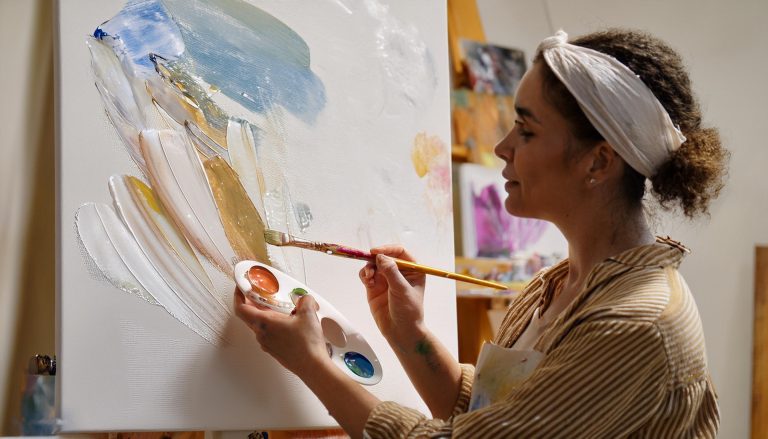Every artist has a unique way of expressing themselves through their art. While it may take time to discover your distinct painting style, the journey itself is both rewarding and eye-opening. Finding your artistic voice allows you to create pieces that truly resonate with you and your audience. In this post, we’ll explore how you can identify and develop your own painting style.
1. Explore Different Mediums
One of the first steps in discovering your unique style is to explore different painting mediums. Trying out various mediums like acrylics, watercolors, oils, or even mixed media can open up new possibilities for creative expression. Each medium has its own characteristics:
- Acrylics dry quickly and are versatile.
- Watercolors offer a fluid, delicate feel.
- Oil paints allow for rich textures and depth.
Experimenting with different materials helps you understand which ones you connect with the most.
2. Draw Inspiration from Other Artists
Exploring the works of various artists can provide you with fresh ideas and insights into different styles and techniques. Whether you’re drawn to the vibrant strokes of Van Gogh, the bold abstracts of Wassily Kandinsky, or the subtle realism of Vermeer, studying a variety of styles can spark your creativity. However, it’s important to use this inspiration as a foundation, not as a template. The goal is to take elements that resonate with you and incorporate them into your own unique approach.
3. Experiment with Techniques
Artistic style often emerges through experimentation. Try various techniques like:
- Impasto: Applying thick layers of paint for texture.
- Glazing: Layering thin washes of color to build depth.
- Splattering: Creating dynamic and energetic effects with paint splatters.
Don’t be afraid to step out of your comfort zone. By experimenting with techniques, you’ll learn what works best for you and what doesn’t, gradually shaping your individual style.
4. Focus on Your Favorite Subjects
Pay attention to the subjects that you enjoy painting the most. Do you find yourself painting landscapes, portraits, abstract shapes, or still life? Your preferred subjects often reveal a lot about your artistic personality and can guide you toward developing a cohesive style.
For example, if you love painting nature scenes, you might lean towards an impressionistic or realistic style. If you’re into abstract art, you may prefer bold colors, geometric shapes, or expressive brushstrokes.
5. Develop a Signature Element
As you continue painting, you might notice certain patterns, colors, or techniques that you repeatedly use. These recurring elements can become your “signature” and set your artwork apart. It could be a specific color palette, a unique brushstroke, or even the way you portray light and shadows.
Why Finding Your Style Matters
Having a unique style makes your artwork instantly recognizable and personal. It gives your pieces a voice, allowing viewers to connect with them on a deeper level. While it’s important to keep experimenting and evolving as an artist, finding a core style can help you grow your identity as an artist and build a cohesive body of work.
How to Keep Exploring Your Style
Your artistic style is not set in stone. As you gain more experience and explore different influences, your style will naturally evolve. Embrace this evolution as a reflection of your artistic growth. Always be open to trying new things, learning new techniques, and exploring different themes.
Final Thoughts
Finding your unique painting style is a journey of self-discovery and creative exploration. It’s about expressing who you are as an artist and what you want to say through your art. At Sky Art, we provide a range of art supplies to help you on this journey, whether you’re experimenting with new techniques or developing your signature element.
So, gather your materials, let go of perfection, and start exploring what makes your art uniquely yours!


